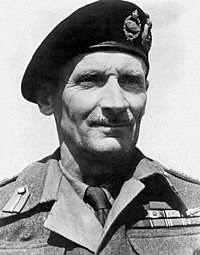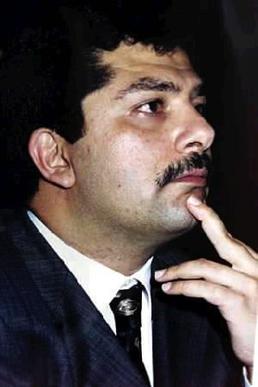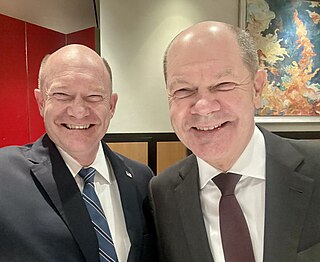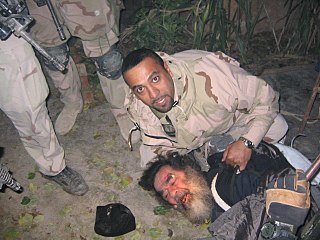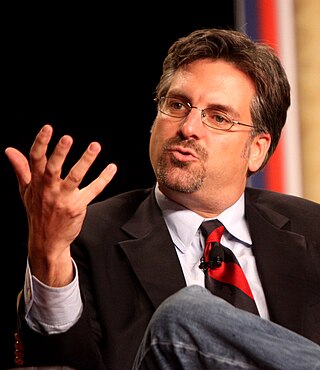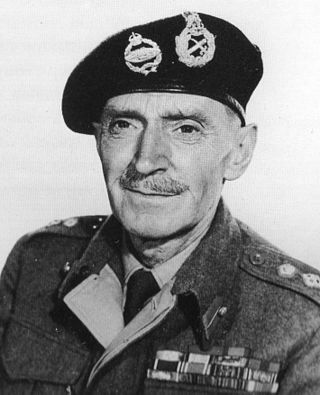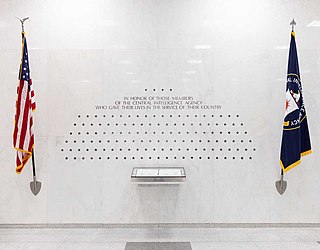Political decoys in history
Since deception is the whole purpose of employing a political decoy, many instances of alleged decoying remain uncertain.
Joe R. Reeder, an undersecretary for the U.S. Army from 1993 to 1997, has gone on record with claims that a number of figures around the world have or have had decoys, including Manuel Noriega, Raoul Cédras, Enver Hoxha, Fidel Castro, and Osama bin Laden. [1]
Of Noriega's four alleged decoys, Reeder said, "They were good: They practiced his gait, his manner of speech and his modus operandi – what he did during the day and night."
Information on these instances of decoying is hard to come by. And falsely accusing an enemy of using a decoy can be an effective psychological operations tactic (making an enemy seem like a coward who dare not appear in person, for example).
This means that the confusion generated by the existence of real decoys is deepened by counterclaims of decoys where there may be none.
The case of Osama bin Laden is instructive. In the absence of confirmed sightings of the terrorist figurehead, many sources openly speculated that videotaped messages from bin Laden were in fact recordings of a double – either as part of a "frame-up" operation, or as part of a strategy of deception on bin Laden's part. [2]
Speculation in such situations is naturally liable to run high. For the purposes of this entry, only well-documented allegations or confirmed cases of political decoying are discussed. Instances which are still under debate will have section headings below in quotes.
Bernard Montgomery / Clifton James and "Tex" Banwell (1944)
Soldier M. E. Clifton James successfully impersonated General Bernard Montgomery ("Monty") for intelligence purposes during World War II. [3] In 1940, James acted in an Army production called When Knights Were Bold and his photograph appeared in an Army newspaper with a remark about how much he resembled General Montgomery.
As a result, he was approached by actor David Niven in May 1944. Niven, then a Colonel in the Army Kinematograph Section, told James he was wanted to impersonate "Monty", as this would allow Montgomery to be somewhere else, thus confusing the Germans.
James had to learn Montgomery's gestures, mannerisms, gait and voice and had to give up smoking.
Because James had lost his right-hand middle finger in the First World War, a realistic replacement was made.
Even his wife had to be deceived and was both kept in the dark and sent back to Leicester. Once he was trained, his trip as "Monty" was to Gibraltar and from there to Algiers. "Monty's" presence succeeded in confusing the Germans in regard to the invasion plans.
James was later the subject of a biopic called I Was Monty's Double starring James himself in the double role as Monty and himself.
The second (and less famous) "Monty's Double", Keith Deamer Banwell, [4] was serving with the land-based Long Range Desert Group.
Banwell was captured in a raid on Tobruk, but with a friend managed to steal a German vehicle and escape. During a subsequent raid on Crete he was taken prisoner at Heraklion and put under the personal supervision of former world heavyweight boxing champion Max Schmeling, who was serving in the German Army.
Banwell and a few of his comrades managed to slip away from their captors and then acquired an assault landing craft. With the help of some Cretan fishermen they made their getaway, but the craft ran out of fuel and drifted for 9 days before reaching the North African coast. The privations of this voyage put Banwell in hospital for 12 weeks.
When he had recovered, someone noticed that he bore a resemblance to General Montgomery. It was decided that he participate in deception ploys, and so Banwell was sent to Cairo to meet Montgomery, given the appropriate clothing, insignia and General's badges and sent on trips around the Middle East to confuse enemy spies.
However, as he was considerably taller than Montgomery, he was told that on no account should he get out of the car. Banwell, finding the assignment boring, sought a return to the infantry. [5] [6]
Joseph Stalin / "Rashid" / Felix Dadaev (1940s–1950s)
Soviet leader Joseph Stalin is alleged to have had a double, identified only as "Rashid". Officials at the KGB allegedly learned that Rashid was a "double" for Stalin and employed him to replace Stalin for some public functions after World War II. Rashid spent two years studying with Alexei Dikiy, an actor who played the role of Stalin in propaganda films. Rashid claimed there were other Stalin lookalikes employed by the KGB, although he never met any. He claimed to have heard of another Stalin double who was hired to live in the leader's dacha outside of Moscow in the late 1940s and 1950s when Stalin was dying. This double filled in for Stalin for media events and at times when Stalin had to meet government functionaries and others. Rashid died in 1991, aged 93. [7]
In 2008 another one of Stalin's doubles, Felix Dadaev, came forward, having written a book about his adventures as a political decoy. The Putin government gave him permission to tell his story at age 88.[ citation needed ] He appeared in a 2014 documentary about Stalin's last days on German television. [8]
Sukarno / unknown (1950s)
The U.S. Central Intelligence Agency (CIA) had planned to bring down Indonesia's first president Sukarno by portraying him in a pornographic film in the late 1950s.
The agency put together a pornographic film starring a Sukarno look-alike in bed with a blonde playing a Soviet agent. The humiliation caused by circulating the film was supposed to drive Sukarno from office, but the plan was unsuccessful, as Sukarno took great humor in the footage and asked for additional copies. [9] [10]
Henry Kissinger / unknown (1971)
A former aide to Henry Kissinger has gone on the record with claims that Kissinger was impersonated at least once during his secret visit to China in 1971. Since no one was allowed to examine 'Kissinger' at close quarters, the resemblance of the impersonator to his 'target' must remain under some doubt. [11]
Boris Yeltsin / unknown (1996–2000)
In 1998, Duma deputy Aleksandr Salii asked the office of the Russian Prosecutor-General to investigate claims that a double had been impersonating Boris Yeltsin for official purposes since the real Yeltsin's heart surgery in November 1996. Salii told journalists that he and colleagues had examined some 1,500 photographs and gathered evidence showing that a "New Yeltsin" had appeared after 1996, with the supposed decoy frequently displaying his injured hand, whereas the real Yeltsin had always tried to conceal that hand. [12] Yeltsin had frequently disappeared from public view in preceding years, sometimes in circumstances that aroused widespread suspicion. In July 1995, Yeltsin disappeared from public view for weeks following a heart operation. A photograph of Yeltsin was released to dispel rumours about his health, which actually inflamed the situation when it emerged that it appeared to be a manipulated photograph composited from an earlier photograph taken some months prior. [13]
Saddam Hussein / several unknowns (1990s–2003)
In 2003, German television network ZDF broadcast claimed that Iraq's former president Saddam Hussein was frequently replaced with doubles for TV appearances. This analysis was based on sophisticated measuring techniques, which detected discrepancies in the position of Hussein's facial features and blemishes from appearance to appearance. It was supported by the opinion of Jerrold Post, the man who created the CIA's Psychological Profile Unit. [14] It was also alleged that Austrian politician Jörg Haider had actually met a double when he thought he was meeting Hussein. [15]
However, those claims are disputed: Ala Bashir, Saddam Hussein's former personal physician, stated, "The stories about Saddam Hussein having body doubles, to foster the impression that the Iraqi dictator was everywhere, are nonsense." [16]
